EJN Special Issues
| Cover Image | Title | Vol/Iss | Guest Editors |
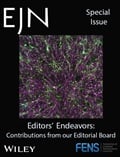 |
|||
|
The Intertwinement: A co-culture of human iPSC-derived neurons (green) and astrocytes (magenta). Image with permission of Wardiya Afshar-Saber. |
|||
 |
Angela Cenci Nilsson (Lund University) |
||
|
This Special Issue covers broad topics of Basal ganglia research using a breadth of anatomical, functional and computational approaches in both humans and animal models of Parkinson's disease. These studies are complemented with preclinical work focused on the characterization of novel neuromodulation and non-dopaminergic pharmacological antiparkinsonian therapies. |
|||
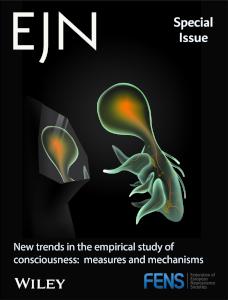 |
New Trends in the Empirical Study of Consciousness: Measures and Mechanisms |
Simone Sarasso (University of Milan) |
|
|
What makes us conscious? How do we assess the presence of consciousness in others? Understanding what makes us conscious is one of the major frontiers of science. The articles in this special issue draw on a broad spectrum of experimental and theoretical approaches, encompassing physiological states, pharmacological interventions, and clinical conditions that influence both the states and contents of consciousness. |
|||
 |
Steven A. Brown Special Issue: Dynamic Interactions of Biological Clocks, Sleep and Metabolism |
Hans-Peter Landolt, University of Zurich, Konstantinos Kompotis, University of Zurich, Antoine Adamantidis, University of Bern |
|
|
With the unexpected passing of Steven A. Brown in December 2022, the fields of chronobiology and sleep research suddenly lost a pioneering researcher. This special issue provides a collection of research articles, reviews and personal tributes from colleagues and collaborators all over the world who were inspired by his work. The content spans from biological clocks to metabolism and sleep, from molecules to behavior, and from cells over animals to humans, highlighting the far-reaching implications of Steve’s scientific discoveries. |
|||
 |
The Relevance of a Philosophical Toolkit to Advance Neuroscience Cover image created by Dr. Igor Branchi. The photograph of The Thinker sculpture by Auguste Rodin is Adobe Stock Photo No 36164973. |
Markus Kunze (Center for Brain Research, Vienna), |
|
|
Neuroscience is advancing at an unprecedented pace, yet our understanding of the brain and the mind remains incomplete—sometimes even lagging behind empirical insights with concepts and models from the past. Integrating innovative and original theoretical frameworks offers a promising path to overcoming these limitations. In this pursuit, closer collaboration between neuroscience and philosophy can provide essential tools to refine scientific inquiry. In this special issue, neuroscientists and philosophers engaged in interdisciplinary exchange share their insights to inform the neuroscience community. They describe their conceptual approaches, discuss their feasibility, and propose strategies to drive the field forward. |
|||
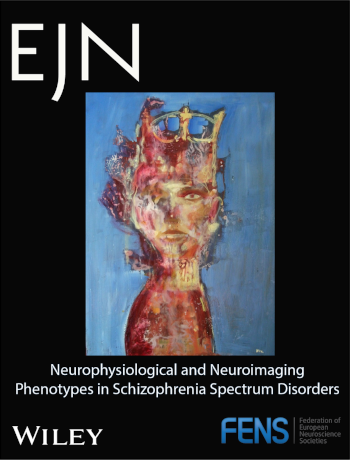 |
Neurophysiological and Neuroimaging Phenotypes in Schizophrenia Spectrum Disorders |
Dean Salisbury, John Foxe, Juanita Todd, Kiyoto Kasai, Jun Soo Kwon, Giorgio Di Lorenzo |
|
|
From the earliest days of human event-related potential (ERP) recordings in the 1960s, researchers have compared electrophysiological signatures in individuals suffering from psychotic disorders with those recorded from neurotypical individuals, seeking insight into the underlying neuropathology. This special issue pulled together the current state of knowledge with regard to neurophysiological and neuroimaging markers in Schizophrenia and related psychosis spectrum disorders, in all phases of the disease. |
|||
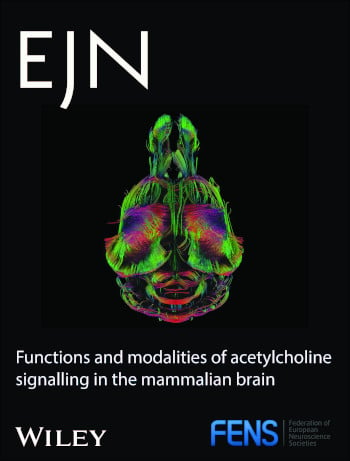 |
Functions and Modalities of Acetylcholine Signaling in the Mammalian Brain |
Howard Gritton, |
|
|
Research over the last 15 years supports the need for a revision of long-held theories surrounding the function of the brain cholinergic systems. Historically cast as a general broadcast system, emerging evidence supports a substantially more complex picture of acetylcholine signaling. In this special issue, we bring together new research on cholinergic modulation across diverse networks and behaviours that enhance our understanding of the functions mediated by this system. |
|||
 |
Yoland Smith, |
||
|
Since their original discovery in the 1960’s, dopamine neurons have been at the forefront of basic and clinical neuroscience research. Despite significant advances in our understanding of dopamine release and modulatory functions in the CNS, the recent development of cutting-edge imaging and functional approaches to interrogate dopamine neurons highlights that much remains to be known about dopamine and its involvement in brain function and diseases pathophysiology. This Special Issue brings together a series of reviews and original papers that cover a broad range of basic and clinical research related to Dopamine regulation of brain circuits and behavior in normal and diseased states. |
|||
1460-9568.sleeping-brain.cover.gif) |
Special Issue on Local Circuits to Large‐scale Networks in the Sleeping Brain |
Adrien Peyrache, Lucia Talamini, Genevieve Albouy, Antoine Adamantidis |
|
|
Sleep states are universally described throughout the animal kingdom, yet our understanding of their contribution to brain function and dysfunction remains limited. This special issue presents 13 new studies in the field of systems-level sleep research, providing an overview of recent technical, methodological and theoretical innovations in the field. |
|||
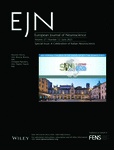 |
57:12, 2023 | Maurizio Memo, Giuseppe Pignataro | |
|
This special issue was inspired by research presented during the The Italian Society of Neuroscience National Congress (SINS), September 2021. The subject matter of this conference was unique in that it dealt both with issues related to basic neuronal function as well as to the integration between physiology and diseases. Some of the most significant results are included in this special issue. |
|||
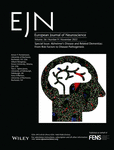 |
Alzheimer's Disease and Related Dementias: From Risk Factors to Disease Pathogenesis |
56:9, 2022 | Anton P. Porsteinsson, Srikant Rangaraju, Tara L. Spires-Jones, Kerry O’Banion |
|
It is a stimulating time to be a dementia researcher. We have learned that amyloid-directed therapeutics will be most effective at very early disease stages, making the need for biomarkers of early disease even more pressing. A deeper understanding of disease mechanisms beyond amyloid, as well as how risk factors change the brain to cause disease, is needed to develop effective disease-modifying therapeutics or preventative strategies. In this special issue, we present a collection of original research papers and reviews addressing these knowledge gaps. These range from fundamental studies of disease mechanisms in animal and cell model systems to studies on human cognition and biomarkers associated with age and disease. |
|||
 |
55:11-12, 2022 | Christian Keitel, Manuela Ruxxoli, Laura Dugué, Niko A. Busch, Christopher SY Benwell | |
|
Brain activity abounds with rhythmic patterns that reflect ongoing fluctuations of neuronal excitability, leading to the hypothesis that cognitive functions themselves may be intrinsically rhythmic. Rhythmic sampling, implemented through brain rhythms, has been proposed as a fundamental process underlying some cognitive functions. However, despite extensive research, the existence and exact nature of rhythmic sampling processes remain intensely debated. In this Special Issue, we present methodologically principled studies, irrespective of their outcome, that can help clarify if, and under which conditions, a rhythmic sampling of cognition can be observed. |
|||
 |
Stress Brain and Behavior | 55:9-10, 2022 | Mathias V. Schmidt, Oliver Robinson, Carmen Sandi |
|
Stress is a cross-species phenomenon that can have important consequences for both individuals and societies. Highly specific stress responses have evolved to enable individuals to optimally adapt to challenging situations, and these processes can have a major impact on whole body physiology, brain function, and behavior. Gathered in this special issue are contributions illustrating recent advances in stress research, including contributions from the fields of neuroendocrinology, genetics, systems biology, behavioural and cognitive neuroscience, computational neuroscience, psychiatry and translational and applied neuroscience. |
|||
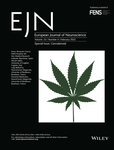 |
Cannabinoid signalling in the brain: New vistas | 55:4, 2022 |
Arnau Busquets-Garcia, Miriam Melis, Luigi Bellocchio, Giovanni Marsicano |
|
The finding of cannabinoid signalling in our body and brain can be classified amongst the most exciting discoveries of the last decades. The aim of this special issue is to provide new opinions and experimental observations regarding endocannabinoid signalling (ECS) in the brain, which opens new perspectives on the complexity of this signalling and its participation in brain functions and behavior. Specifically, the different manuscripts reflect recent progress in our understanding of (i) pharmacology of the ECS, (ii) the importance of cell-type specific mechanisms depending on the localization of cannabinoid receptors, (iii) the roles of the ECS in synaptic functions or developmental processes, and (iv) the involvement of cannabinoid signalling in pathological conditions. |
|||
 |
Time to move: brain dynamics underlying natural action and cognition | 54:12, 2021 |
Pierfilippo De Sanctis, Teodoro Solis-Escalante, Martin Seeber, Johanna Wagner, Daniel P.Ferris, Klaus Gramann |
|
Human brain dynamics underlying everyday active behaviour are largely unknown, due to limitations in technology. However, recent technological progress now allows biomedical recordings during active behavior using light-weight portable solutions–Mobile Brain/Body Imaging (MoBI). The goal of MoBI is to model brain and body dynamics in a range of protocols, from controlled laboratory setups to everyday, real-life situations. In this special issue, Time to Move, we present a collection of experimental papers, targeted reviews and opinion articles that lay out the latest findings. What unites these papers is the common goal to enhance and restore human abilities by reaching a better understanding on how cognition is implemented by the brain–body relationship. |
|||
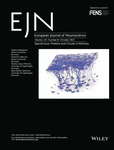 |
Proteins and Circuits in Memory | 54:8, 2021 |
Magnus Kjærgaard, Tomonori Takeuchi, Nicolas Caesar Petersen, Jakob Balslev Sørensen |
|
Memory plays a central role in our life. Indeed, we are who we are largely because of what we remember. One of the most challenging tasks of neuroscience in the 21st century is to understand the mechanisms of memory, from the molecular to the circuit level. This special issue was inspired by a successful meeting in March 2019 hosted by the ‘Center for Proteins in Memory (PROMEMO)’, a centre of excellence at Aarhus University funded by the Danish National Research Foundation. The meeting focused on connecting the molecular mechanisms of proteins– from atomic structures to their roles in circuits, including new emerging methods. This special issue has a similar scope and contains six primary research reports and eleven state-of-the-art reviews. |
|||
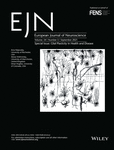 |
Glial Plasticity in Health and Disease | 54:5, 2021 |
Ania Majewska, Alexej Verkhratsky, Ethan Hughes |
|
Recent decades bear witness to the Renaissance in glial research. The accelerated pace of glial research within modern neuroscience has highlighted diverse functions of astrocytes, oligodendrocytes and microglia: these cells have dazzled with the amazing array of their roles in shaping the brain in development, ensuring its proper function during the lifespan, and contributing, both positively and negatively, to disease and injury processes. The papers in this special issue reflect the recent progress in our understanding of the diverse roles of these cells in development, normal brain function, aging and disease. |
|||
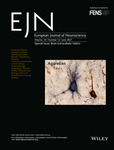 |
Brain Extracellular Matrix | 53:12, 2021 |
Alexander Dityatev, Constanze Seidenbecher, Markus Morawski |
|
The extracellular matrix (ECM) in the CNS forms highly organized extracellular structures and is known to play multiple roles in development and adulthood. This special issue comprises a series of articles that lay out the latest understanding of cellular and molecular mechanisms by which diverse forms of ECM are changed in CNS diseases and how these alterations may affect synaptic and cognitive functions. Emphasis is put on the mechanisms regulating proteolytic remodeling of neural ECM under different (patho) physiological conditions, the ECM-mediated signaling in major neurological and psychiatric disorders, and emerging tools and strategies for analysis and therapeutic targeting of the neural ECM. |
|||
 |
Powering the Brain in Health and Disease (Special Section) | 53:9, 2021 |
Tomaz Kozics, Eva Morava, Tal Yardeni |
|
The brain has the highest energy demand of any organ, and an increasing body of clinical and preclinical evidence suggests composite energy deficiency in the brain as a coherent theory for neuropsychiatric diseases. The studies presented in this special section examine energy production and consumption as a special case of system vulnerability for the brain. These studies also raise awareness on the significance of brain bioenergetics in health and disease, and highlight the potential of pharmacologically targeting mitochondria not only to find novel therapeutic approaches in neuropsychiatric diseases, but also to ensure that such treatments are tailored to the needs of the individual. |
|||
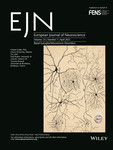 |
53:7, 2021 |
Yoland Smith, Paul Bolam, Thomas Boraud | |
|
The Basal Ganglia/Movement Disorders Special Issue consists of a series of selected articles and reviews that cover a broad range of basic and clinical research in the field of basal ganglia, Parkinson's disease and related movement disorders. The papers arose from presentations given at the 13th International Basal Ganglia Society (IBAGS) Meeting held in Biarritz, France. The level of analysis and breadth of techniques used in these studies provide a good overview of the current state of basal ganglia research and its relevance for the gain of new knowledge in the pathophysiology of basal ganglia disorders and the development of new therapeutics. |
|||
 |
53:1, 2021 |
Michel Barrot, Ipek Yalcin | |
|
Depressive disorders are endemic. Because the neurobiological mechanisms of depressive disorders remain poorly understood, and current treatments are only effective in approximately two-thirds of patients, there is intensive ongoing research on the molecular and neural mechanisms underlying depression and its therapies. This Special Issue presents selected reviews and articles from human and animal-based research, focusing on depressive disorders through an integrative analysis, from cellular, molecular and circuitry levels to behavioural and environmental analyses. |
|||





